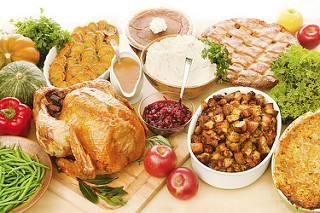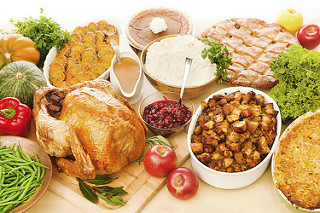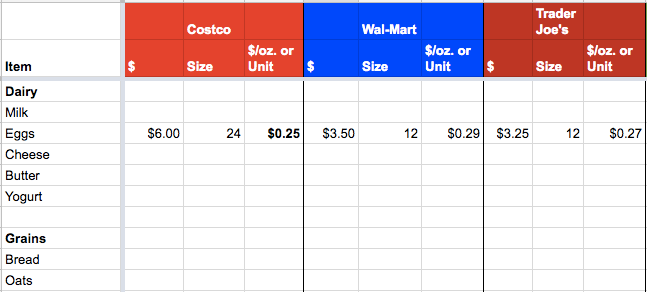I’m lucky (and very spoiled) to work for an employer that offers a full lunch cafeteria – all expenses paid – as part of my benefits package.
As I grab my plate and head through the lines at the various food stations, it rarely fails that my plate ends up being fully covered with delicious, mouth-watering food. As I peruse the various options, my lizard brain thought process is a little something like this,
“There’s empty space on my plate – you look tasty – welcome to my plate.”
The plates are a size that allows for an amount of food that is ever so slightly over what I should probably be consuming, given my typical caloric intake. So I over-consume to the point of feeling slightly gross. And I never want to let a bite go to waste (there are starving kids, after all), so I clean off the plate. Thankfully, this is only 5 meals out of my 21 per week, so I don’t weigh 50 pounds more than I presently do.
 Before you glutton-shame me (trust me, I’ve already done that), I’d ask you to think back to how much food you consumed at your last few open buffet, potluck, and family holiday meals. If you have “pigged” out, you’re not alone. In fact, a scientific study showed that,
Before you glutton-shame me (trust me, I’ve already done that), I’d ask you to think back to how much food you consumed at your last few open buffet, potluck, and family holiday meals. If you have “pigged” out, you’re not alone. In fact, a scientific study showed that,
“Chinese buffet diners with large plates served 52% more, ate 45% more, and wasted 135% more food than those with smaller plates.”
Funny that they focused on Chinese buffets, but I digress. The point is that when presented with more food than we could possibly consume, it’s almost a guarantee that we will consume more food than we reasonably should.
But this isn’t just a story about food.
We live in a world that is driven by consumption and nearly unlimited options of what to consume. In fact, our consumption is really only limited by 2 things:
- The monetary resources we have to consume with.
- The container size to hold what we consume (portion control).
Most of what I write about here and personal finance, in general, is focused on #1 – monetary resources. That’s for good reason – we suck at it. The average personal savings rate is just 5%, and that includes the wealthiest of households inflating the average. The average millennial personal savings rate is negative. However you slice the data, Americans typically spend everything that they earn, live paycheck-to paycheck, and even finance debt (resources they don’t have) in order to consume even more.
I’ve spent much less time on portion control, but have highlighted how downsizing your home can have huge financial benefits. However, the more I think about it, the more I believe it might be the biggest weapon we have against over-consumption and to improve our monetary resources. Here are a few of many examples:
- Food: smaller plates = less food consumed + more leftovers.
- Drink: smaller glasses = less drink consumed.
- Location-Based: living closer to work = less miles driven (and potentially no need for a car).
- Houses: smaller houses = less stuff needed to fill it + lower costs to insure + lower taxes.
- Cupboard Space: less cupboard space = less room for kitchen gadgets.
- Yards: smaller yards = less toys + lower taxes.
- Garages: smaller garages = less cars + toys to fill them.
- Closets: smaller closets = less clothes + toys to fill them.
Reduce your container sizes and you’ll have better portion control on what you consume. And when you do that, you’ll be happier, healthier, and much wealthier.





